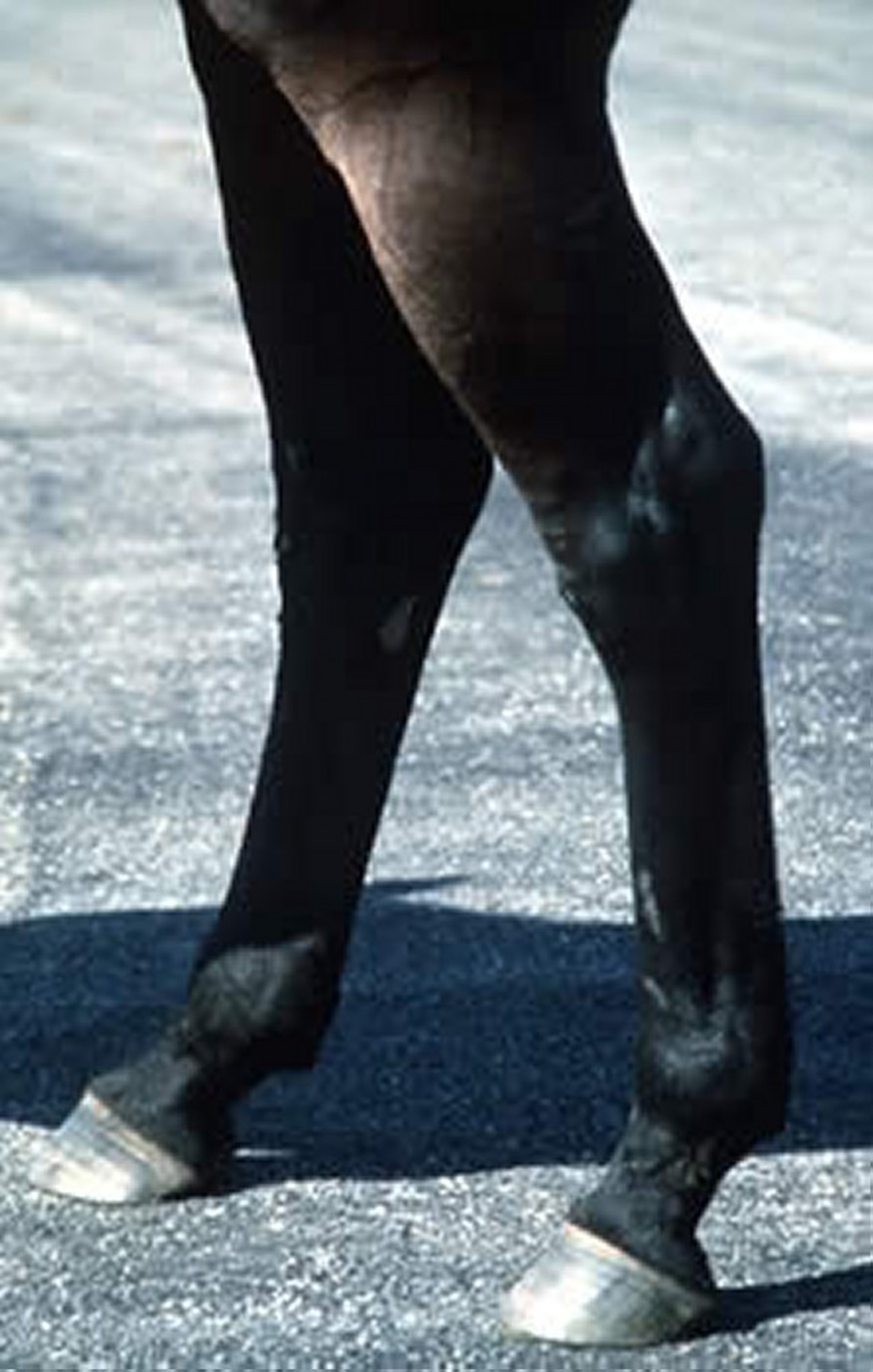Courtesy of Dr. Thomas Lane.
Acute or chronic synovitis of the tarsocrural joint resulting in distention of the joint capsule may occur due to osteochondrosis, degenerative joint disease, trauma, poor joint conformation, hemoarthrosis, or infection, or it may be idiopathic. Lameness may or may not be present, depending on the etiology. Diagnosis is based on clinical signs and a positive response to intra-articular analgesia of the tarsocrural joint if lameness is present. Radiographs should be taken to exclude OCD and other radiologically evident pathology, and ultrasonography should be done to assess the periarticular soft-tissue structures. Synoviocentesis of the tarsocrural joint should be performed if sepsis or hemoarthrosis is suspected. Idiopathic synovitis may be diagnosed in the absence of lameness or radiologic change.
Idiopathic synovitis rarely interferes with use of the horse but may be considered an unacceptable cosmetic blemish. Idiopathic synovitis may be managed by draining the synovial fluid and medicating the joint with intra-articular corticosteroids. Pressure bandages should be applied afterward to provide joint compression, and the horse stall rested for 2 wk. However, in approximately half of horses, effusion will recur and a persistent cosmetic blemish remains. Intra-articular injection of atropine (8 mg) may sometimes help.

